By Romulo Lollato and Erick DeWolf et.al
White heads have been appearing in many wheat fields around Kansas. Sometimes the white heads are just single tillers scattered throughout part or all of a field, and sometimes they occur in small-to-large patches. Heads might be completely white starting from the stem, or may just have a few spikelets showing the discoloration.
There are many causes of white heads. Here are some of the most common causes and their diagnosis.
Freeze injury to stem or crown. Depending on the stage of growth at the time of a late spring freeze, parts or all of the heads may die and turn white (Figure 1).
In years when the freeze occurs about the boot stage or a little earlier, there can be injury to the lower stem, which then cuts off water and nutrients to the developing head and that stem simply does not develop. In years when the wheat is in the early heading stage at the time of the freeze, the freeze can damage the heads directly.
Often, wheat on north-facing slopes, on ridge tops, or in low-lying areas will be most affected by freeze injury. But freeze injury can also be so severe that it occurs throughout the fields, in no particular pattern. Crown rot is another potential problem that can be traced back to freeze injury.
When the crown is damaged by cold temperatures or a freeze, part or all of the tillers can die. If the tiller from a damaged crown forms a head, this head will almost always be white. The crown will have internal browning, and stands will usually be thinner than normal.
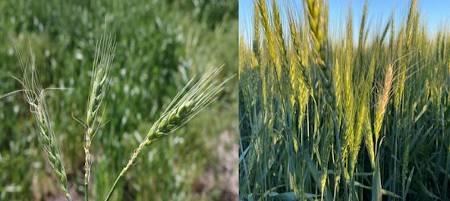
Figure 1. Freeze-damaged wheat heads.
Hail. Hail can cause white head to appear when it breaks the connection between the stem and the head (Figure 2). Occasionally, hail can also damage just a portion of a head and cause that damaged portion to turn white. The hail impact to the heads may also remove spikelets and expose the rachis (Figure 3).
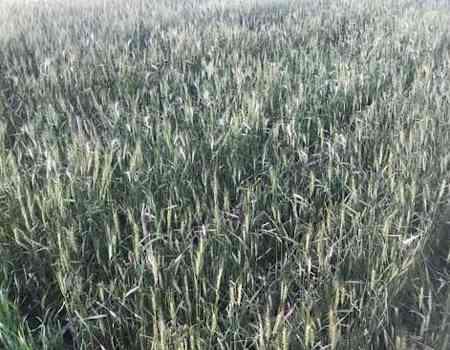
Figure 2. Wheat field in Sumner county showing a high incidence of white heads due to hail damage.
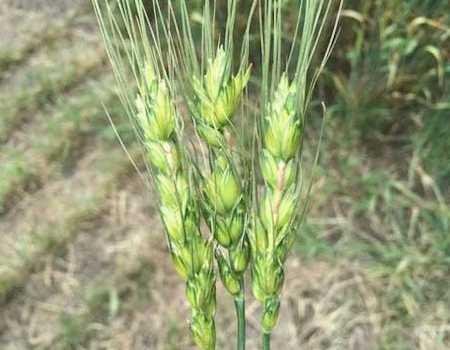
Figure 3. The heads in this photo have had a few spikelets removed due to hail impact and have their rachis exposed.
Dryland root rot (also known as dryland foot rot). This disease, caused by the Fusarium fungus, causes white heads and often turns the base of the plants pinkish (Fig. 4). As with take-all, dryland root rot causes all the tillers on an infected plant to have white heads. This disease is usually most common under drought stress conditions, and is often mistaken for either drought stress or take-all.
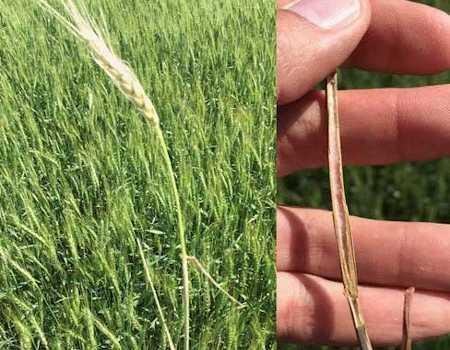
Figure 4. White wheat head caused by Fusarium root rot. Detail on the right shows pink discoloration inside the stem typical of the Fusarium pathogen.
Head scab. When there are periods of rainy weather while the wheat is flowering, as seen across most of Kansas this growing season, some heads may become infected with Fusarium head blight and turn white. The heads of some red-chaffed varieties turn a darker red when infected with scab, but the heads of most varieties turn white. Symptoms can be restricted to one or few spikelets in the head, but often times the upper half or the entire head might be affected (Figure 5). Head scab is most common where wheat is grown after corn, or after a wheat crop that had head scab the previous year. Head scab can be identified by looking for pink spores of the Fusarium fungi, as well as by a darker discoloration to the rachis of the wheat head. During the current growing season, head scab has been observed in south-central and southeast Kansas, but it is probably still early to see symptoms in central and north-central Kansas as it takes approximately three weeks from flowering for the first symptoms to appear.
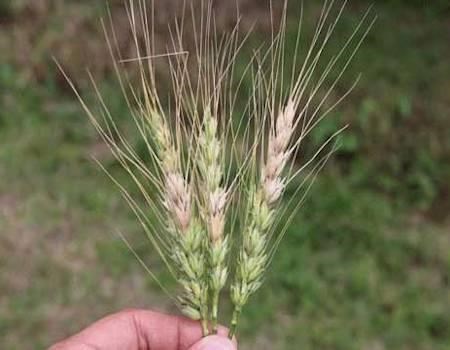
Figure 5. Wheat heads affected by head scab or Fusarium head blight. Symptoms range from one or few spikelets that turned white, to the upper half or entirety of the head.
Take-all. This disease often causes patches of white heads scattered throughout the field. It occurs most frequently in continuous wheat, and where there is a moderate to high level of surface residue. Take-all is also favored by high pH soils, so a recently limed field might also show symptoms. To diagnose take-all, pull up a plant and scrape back the leaf sheaths at the base of a tiller. If the base of the tiller is shiny and either black or dark brown, it is take-all. All tillers on a plant infected with take-all will have white heads. Plants will pull up easily.
Sharp eyespot. This disease is common in Kansas, but rarely causes significant yield loss. Sharp eyespot causes lesions with light tan centers and dark brown margins on the lower stems. The ends of the lesions are typically pointed. If the stems are girdled by the fungus, the tiller may be stunted with a white head. Each tiller on a plant may be affected differently.
Wheat stem maggot. Wheat stem maggot damage is common every year in Kansas, but rarely results in significant yield loss. It usually causes a single white head on a tiller, scattered more or less randomly through part or all of a field. One typical symptom of white heads caused by wheat stem maggot is that the flag leaf and lower stem are often green, and only the last internode (peduncle) and head are white. If you can grab the head and pull the stem up easily just above the uppermost node, the tiller has probably been infested with wheat stem maggot. Scout for symptoms of chewing close to the base of the plants, which could indicate that the head has died as function of wheat stem maggot (Figure 6).
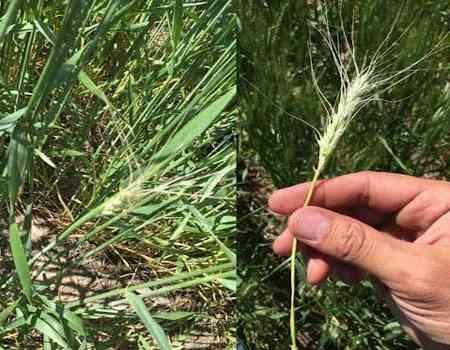
Figure 6. White wheat head due to wheat stem maggot, characterized by a white head and peduncle but with a healthy and green lower stem. Detail on the right shows chewing of the base of the peduncle by the maggot.
Premature dying (drowning). As wheat begins to mature, plants in some areas of the field may have an off-white color similar to take-all (Figure 7). This premature dying could be due to drowning, hot dry winds, or some other stress. The pattern of discolored heads will often follow soil types or topography, and may occur in large patches. The grain will be shriveled and have low test weight.


Figure 7. Large patches of drowned wheat in central Kansas (upper photo) and south central Kansas (lower photo).
Source : ksu.edu